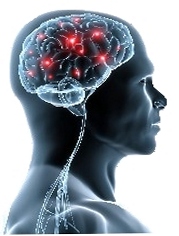
|
|
Title:
Author:
Date Posted:
Source:
|
Anxiety disorder symptoms described by the mothers of children with migraine during psychological interview: a controlled comparative study
Villa TR, et al
Department of Neurology and Neurosurgery, Division of investigation and Treatment of Headaches, EPM-UNiFESP, Sao Paulo, Brazil
December 2010
From the VII International Conference on Headache in Children and Adolescents, Istanbul, Turkey; May 2008
|
Objective: To compare between the prevalence of anxiety symptoms (as described during psychological interview by the mother) in children diagnosed with migraine and in children without headaches.
Method: 28 mothers of patients aged 8 to 12 years, diagnosed with migraine according to international Headache Society (iCHD-ii, 2004) criteria, outpatients of the Division of investigation and Treatment of Headaches, of the Federal University of Sao Paulo, were subjected to an interview consisting of a semi-structured survey. Answers were submitted to qualitative analysis. The related symptoms were classified according to symptoms of Generalized Anxiety Disorder, described in the DSM-iV. The control group consisted of a randomized group of 15 mothers of children in the same age range without headaches (from two public schools in Sao Paolo) who were subjected to the same interview and whose answers were submitted to the same process.
Results: 50% (n = 14) of mothers in the experimental group complained that the patient presented irritability; 46.4% (n=13) described concentration difficulty; 46.4% (n=13) sleep disturbances; 32.14 (n = 9) restlessness; 28.5% (n = 8) excessive preoccupation and 28.5% (n = 8) apprehensive expectations. In the control group, 20% (n = 3) of mothers reported restlessness; 6.6% (n = 1) irritability; 6.6% (n = 1) concentration difficulty; 6.6% (n = 1) sleep disturbances; and 6.6% (n = 1) excessive preoccupation.
Conclusion: Children diagnosed with migraine have a high prevalence of anxiety symptoms when compared to children without headaches. These symptoms must be investigated and properly evaluated, so as to avoid a possible negative impact in the migraineís prognosis.
|

